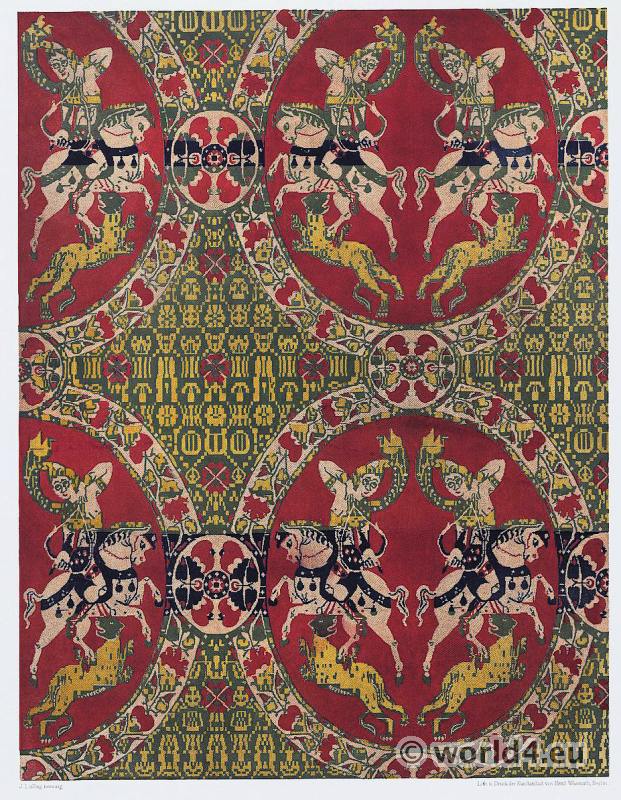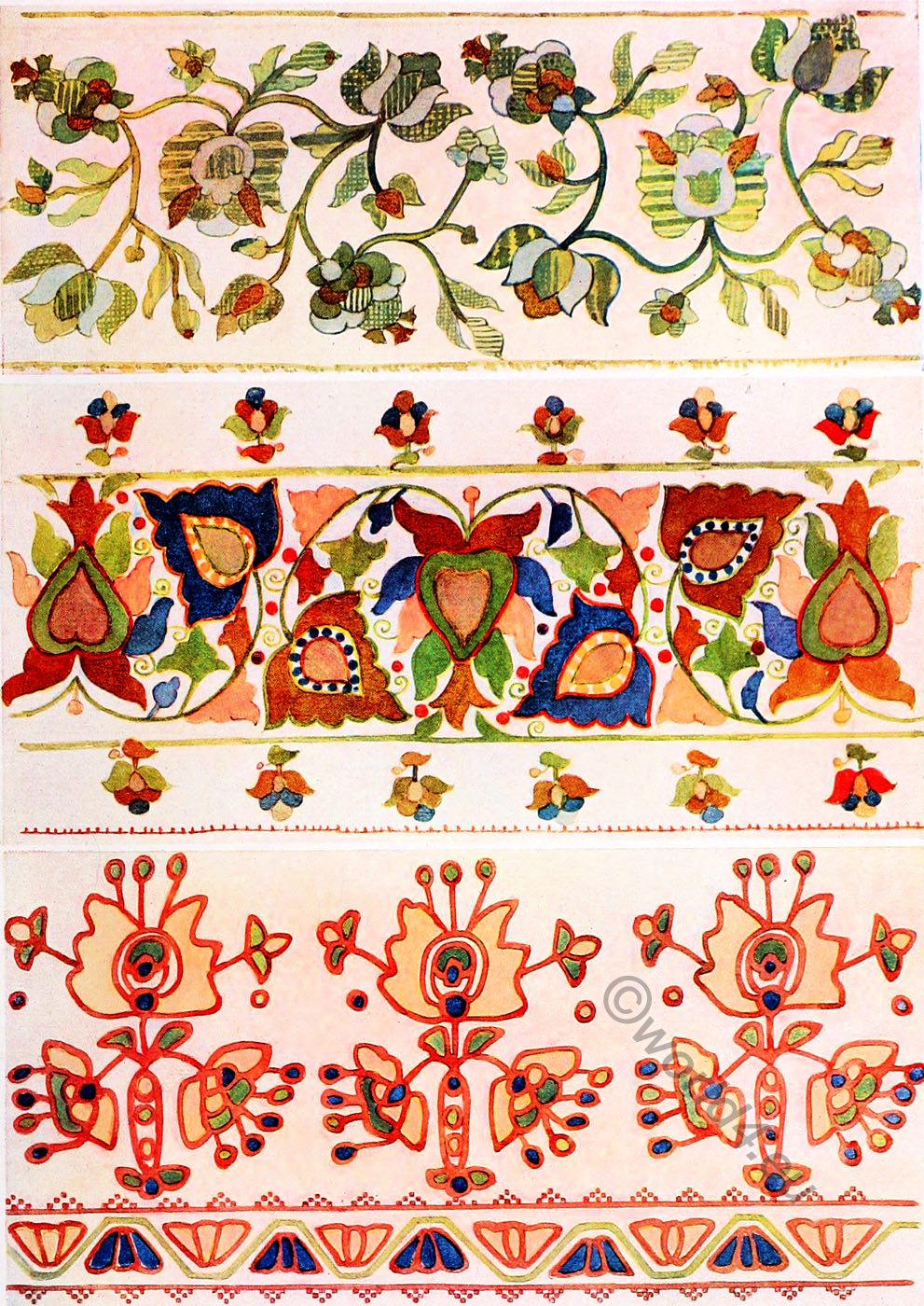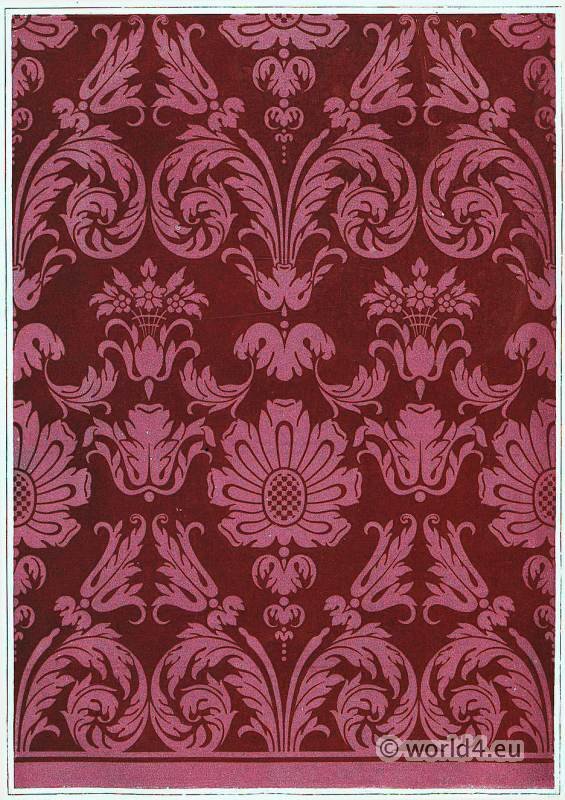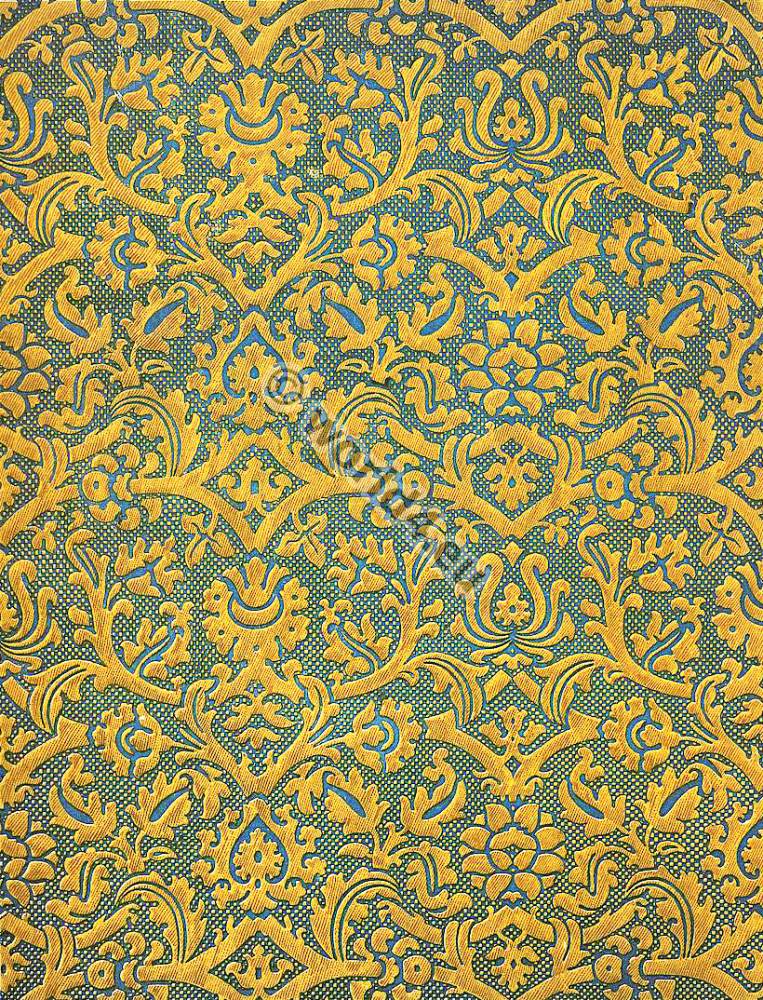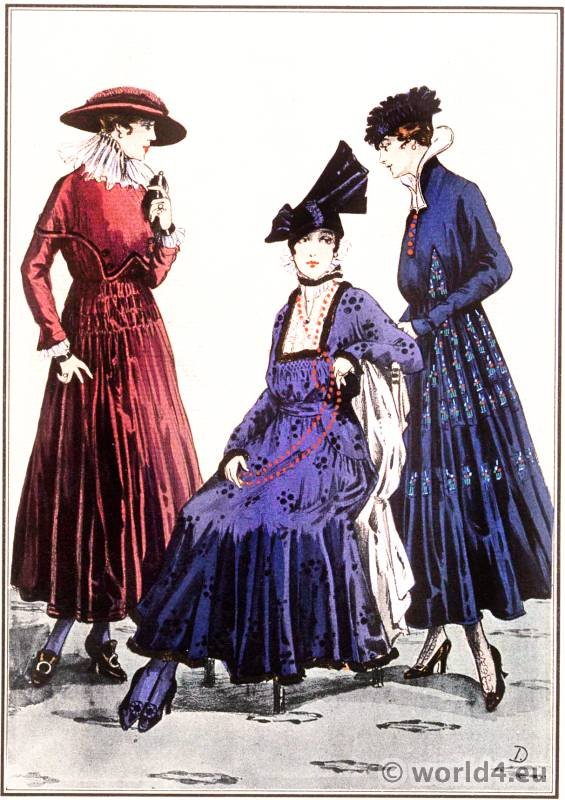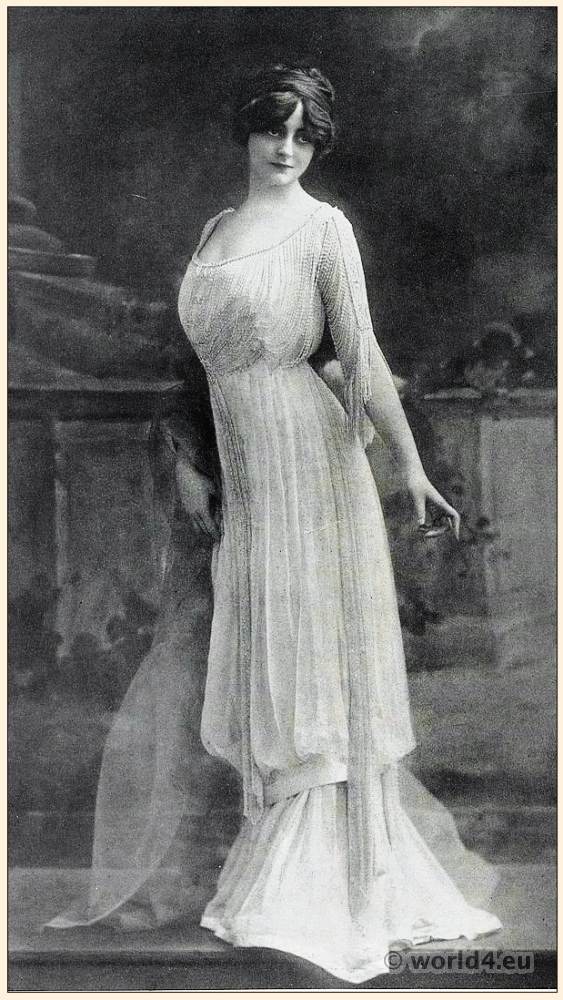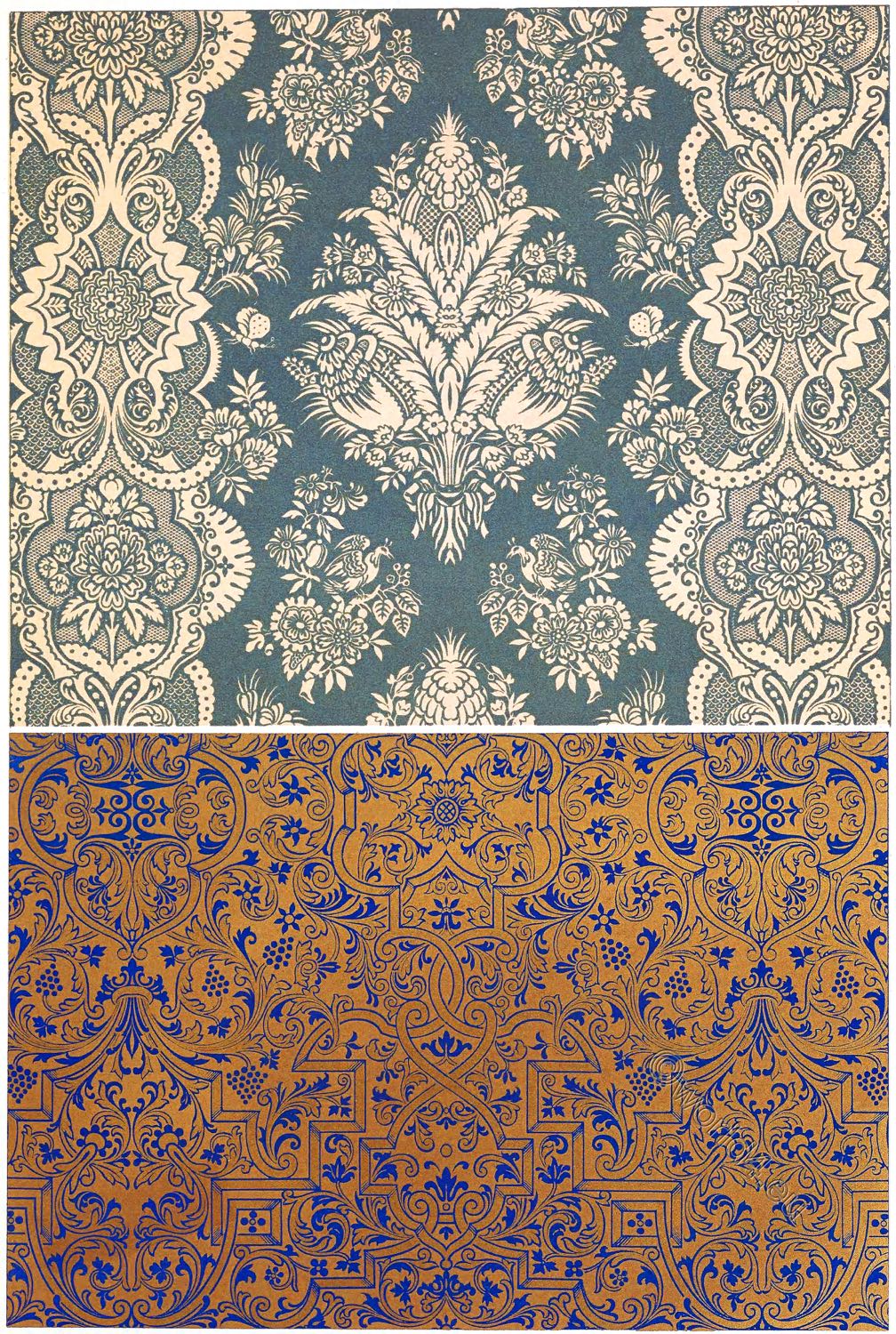
SEVENTEENTH CENTURY. SILK AND STAMPED DESIGNS.
Design of a silk pattern in franco-oriental style based on Persian ornamentation. France at the beginning of the 17th century.
THESE two productions, which as regards colour are simple in the extreme, belong to the close the 17th century.
The exquisite design of the specimen of silk which occupies the upper part of the plate is in the Franco-oriental style, which an already widely-spread knowledge of Persian ornamentation had established in France. The arrangement of vertical bars, forming stripes in the material from top to bottom, is highly decorative; and the general design, founded on the judicious distribution of one colour, contrasts agreeably with the more pretentious works of the same period.
The subject in the lower part of the plate is taken from a stamped book-cover, of which it forms the inside ornament, and is in the style known as that of Louis XIII. The arrangement of the ornamentation belongs to the school of the Bérains, Marots, etc. Branches producing acanthus leaves and small clusters of grapes, compose all its elements.
Source: Polychromatic ornament by Auguste Racinet. London, H. Sotheran and Co., 1877.
Related
Discover more from World4 Costume Culture History
Subscribe to get the latest posts sent to your email.

